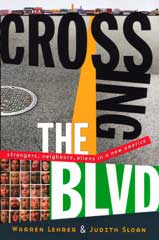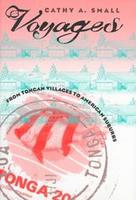Analysis & Observations
 In
the book, In and Out of Morocco, author David McMurray writes
about changing gender roles as a result of migration. As Moroccan
men go abroad and get jobs the women find ways, even in their very
gender-separated society, to find their own space in the world and
be somewhat autonomous (some examples are women taking jobs as
smugglers, singers, etc.). From my interview with Dylan, I also see
a parallel of migration as leading to a shift in gender-roles. Just
as the Moroccan women found jobs and gained some independence
through it, Dylan's own mother had to get a job and she gained
independence through it as well.
In
the book, In and Out of Morocco, author David McMurray writes
about changing gender roles as a result of migration. As Moroccan
men go abroad and get jobs the women find ways, even in their very
gender-separated society, to find their own space in the world and
be somewhat autonomous (some examples are women taking jobs as
smugglers, singers, etc.). From my interview with Dylan, I also see
a parallel of migration as leading to a shift in gender-roles. Just
as the Moroccan women found jobs and gained some independence
through it, Dylan's own mother had to get a job and she gained
independence through it as well.
“At the same time, many U.S. Hmong regard the homeland as impoverished, uneducated, and lacking sophistication of the wider world, a world in which U.S. Hmong now live” (Koltyk 126-127). While Wales is a first world country, there is the idea from Dylan that he would never go back to live because he doesn’t feel he could reach all of his goals there. He is the first to say that had his father stayed in Wales he more than likely would have been working in the shipping industry well into his old age. And while his father works hard here, he also co-owns his own business and is planning to retire in a couple of years, something Dylan and his family never thought would have been possible in Cardiff.
Transnationalism: A New Analytic Framework for Understanding Migration (Schiller et. Al). This article presents the idea that new migrants today should be referred to “transmigrants.” Definition of transimigration: “The processes by which immigrants build social fields that link together their country of origin and their country of settlement” (Schiller et. al 1). It is living in two societies simultaneously. Dylan had a birthday at McDonald’s and loved it, but he also cherishes food from his homeland—such as lamb, leeks, and “Welsh-Rarebit.” He is both Welsh and American at the same time.
 In
Crossing the Blvd. Elke, an Austrian immigrant, states, “I
come from a country village high up in the mountains where every
second person’s last name is the same as mine. I get here and
everybody’s a different color and nationality” (Lehrer and Sloan
59). The same is true for Dylan. In Wales,
99% of the population consists of U.K. born whites (2000 Welsh
Census). Dylan stated several times during the interview that he
loves the diversity of the United States.
In
Crossing the Blvd. Elke, an Austrian immigrant, states, “I
come from a country village high up in the mountains where every
second person’s last name is the same as mine. I get here and
everybody’s a different color and nationality” (Lehrer and Sloan
59). The same is true for Dylan. In Wales,
99% of the population consists of U.K. born whites (2000 Welsh
Census). Dylan stated several times during the interview that he
loves the diversity of the United States.
Dylan absolutely loves that he is frequently bumping into other immigrants—he has friends originally from South Africa and Vietnam. In Voyages, Cathy A. Small writes, “as people change countries, as families traverse nations and nations become increasingly multiethnic, their cultural identity, and the traditional symbols and practices around which that identity is built, take on new dimensions and new functions” (Small 194). Symbols and meanings are constantly changing in the world we live today. One only has to look at the various multi-ethnic celebrations we enjoy in the United States today—everything from St. Patrick’s Day to Cinco de Mayo.

